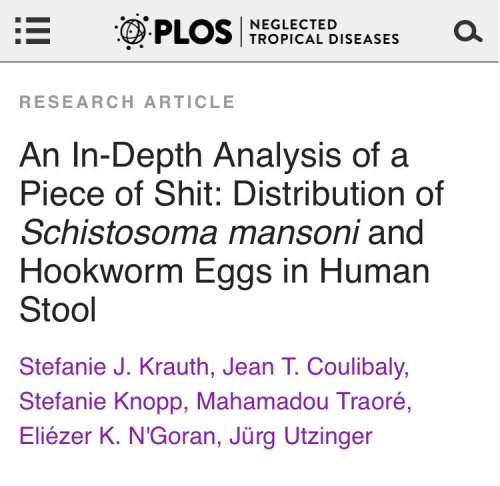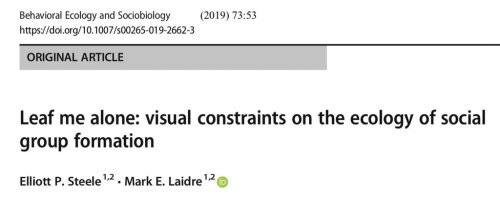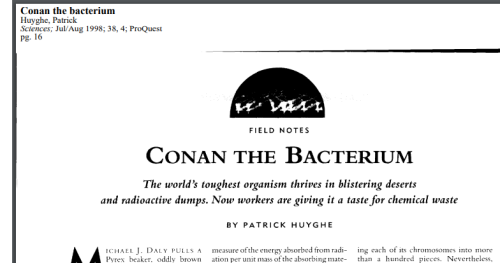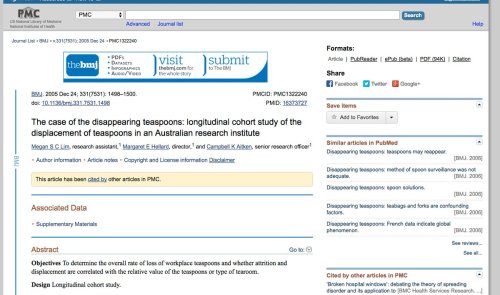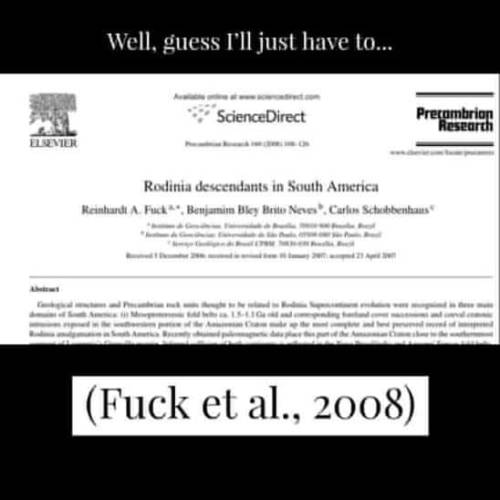SwRI’s Parker Discovers Moon Over Makemake In The Kuiper Belt A Southwest Research Institute-led Team


SwRI’s Parker discovers moon over Makemake in the Kuiper Belt A Southwest Research Institute-led team has discovered an elusive, dark moon orbiting Makemake, one of the “big four” dwarf planets populating the Kuiper Belt region at the edge of our solar system. The findings are detailed in the paper “Discovery of a Makemakean Moon,” published in the June 27 issue of Astrophysical Journal Letters.
“Makemake’s moon proves that there are still wild things waiting to be discovered, even in places people have already looked,” said Dr. Alex Parker, lead author of the paper and the SwRI astronomer credited with discovering the satellite. Parker spotted a faint point of light close to the dwarf planet using data from Hubble’s Wide Field Camera 3. “Makemake’s moon – nicknamed MK2 – is very dark, 1,300 times fainter than the dwarf planet.”
A nearly edge-on orbital configuration helped it evade detection, placing it deep within the glare of the icy dwarf during a substantial fraction of its orbit. Makemake is one of the largest and brightest known Kuiper Belt Objects (KBOs), second only to Pluto. The moon is likely less than 100 miles wide while its parent dwarf planet is about 870 miles across. Discovered in 2005, Makemake is shaped like football and sheathed in frozen methane.
“With a moon, we can calculate Makemake’s mass and density,” Parker said. “We can contrast the orbits and properties of the parent dwarf and its moon, to understand the origin and history of the system. We can compare Makemake and its moon to other systems, and broaden our understanding of the processes that shaped the evolution of our solar system.”
With the discovery of MK2, all four of the currently designated dwarf planets are known to host one or more satellites. The fact that Makemake’s satellite went unseen despite previous searches suggests that other large KBOs may host hidden moons.
Prior to this discovery, the lack of a satellite for Makemake suggested that it had escaped a past giant impact. Now, scientists will be looking at its density to determine if it was formed by a giant collision or if it was grabbed by the parent dwarf’s gravity. The apparent ubiquity of moons orbiting KBO dwarf planets supports the idea that giant collisions are a near-universal fixture in the histories of these distant worlds.
top Image: illustration shows Makemake’s bright red surface and the inferred darker surface of the moon, known as MK2. Image Courtesy of NASA/SwRI/Alex Parker
lower Image: Different views of the Makemake system taken two days apart. Image Courtesy of NASA/Hubble WFC3/SwRI/Alex Parker
More Posts from Study-astronomy-biology-ref and Others

Tardigrades: ‘Water bears’ stuck on the moon after crash
The moon might now be home to thousands of planet Earth’s most indestructible animals.
Tardigrades - often called water bears - are creatures under a millimetre long that can survive being heated to 150C and frozen to almost absolute zero.
They were travelling on an Israeli spacecraft that crash-landed on the moon in April.
And the co-founder of the organisation that put them there thinks they’re almost definitely still alive.
The water bears had been dehydrated to place them in suspended animation and then encased in artificial amber.
“We believe the chances of survival for the tardigrades… are extremely high.”

WOW!!
This computer-simulated image shows a supermassive black hole at the core of a galaxy. The black region in the center represents the black hole’s event horizon, where no light can escape the massive object’s gravitational grip. The black hole’s powerful gravity distorts space around it like a funhouse mirror. Light from background stars is stretched and smeared as the stars skim by the black hole.
Credits: NASA, ESA, and D. Coe, J. Anderson, and R. van der Marel (STScI)
Full Story at Hubble Space Telescope/NASA.- Behemoth Black Hole Found in an Unlikely Place
High-res images at HubbleSite.org

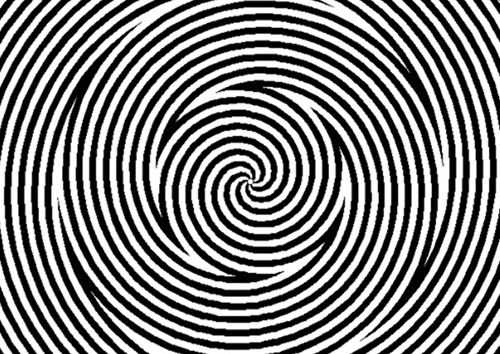





Well, this is definitely the most fun I’ve had while making a post.
Inspired by this one from capnphaggit. Images & copyrights: Trifid Nebula (M20) by Marcus Davies, The Cat’s Eye Nebula and Star-forming region Sharpless 2-106 by NASA, ESA, the Hubble Heritage Team (STScI/AURA). Please don’t remove the credits.

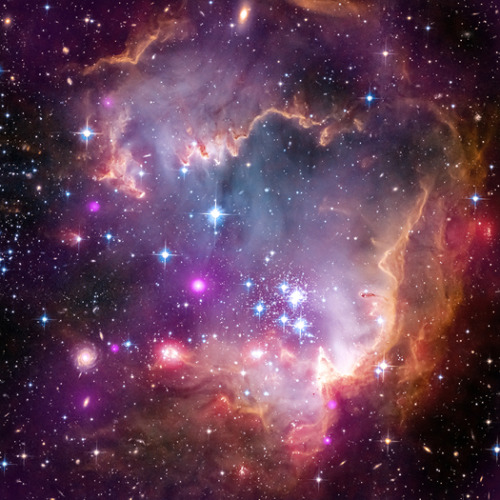




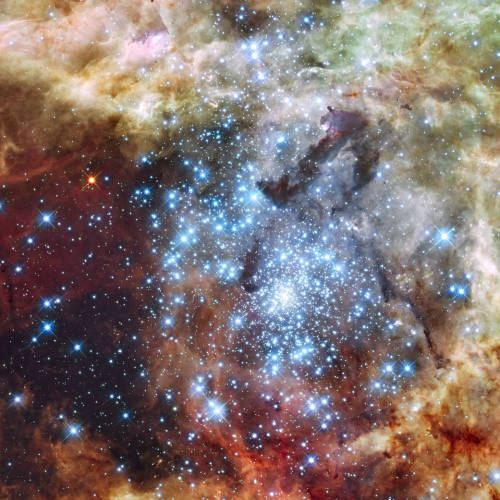



The astro-fashion-loving Internet collectively gasped when ESA’s Hubble twitter account posted three gorgeous gowns, by Czech designer Jirina Tauchmanova with only credit “Photo: Vasek”, which google thinks is a Canadian tennis player. For four long days I couldn’t find anymore images, until, today! Which is why I’m sharing a belated #FashionFriday and #StarrySunday combo.
These gown were shown at Serbia Fashion Week back in December 2015 as Jirina Tauchmanova‘s Spring/Summer 2016 collection – I hope that means they will be available for purchase soon!
I think I recognize at least two of the images, NGC 602 & 30 Doradus, but I’m going to have to see these in person to be sure, yes, definitely, and probably try them on, too.
–Emily

Group Of Galaxies Called “Stephan’s Quintet.” The Quintet Is A Prototype of A Class Of Objects Known As ‘Compact Groups Of Galaxies

Which U.S. state has banned some sunscreens from 2021, and why? ☀️ Find out in this month’s edition of #PeriodicGraphics in C&EN: https://ift.tt/2jSN4jl https://ift.tt/2JWdZ71
Sleep is your superpower | Matt Walker
Sleep is your life-support system and Mother Nature’s best effort yet at immortality, says sleep scientist Matt Walker. In this deep dive into the science of slumber, Walker shares the wonderfully good things that happen when you get sleep – and the alarmingly bad things that happen when you don’t, for both your brain and body. Learn more about sleep’s impact on your learning, memory, immune system and even your genetic code – as well as some helpful tips for getting some shut-eye.
How To Help Your Anxious Partner — And Yourself
Living with anxiety can be tough — your thoughts might race, you might dread tasks others find simple (like driving to work) and your worries might feel inescapable. But loving someone with anxiety can be hard too. You might feel powerless to help or overwhelmed by how your partner’s feelings affect your daily life.
If so, you’re not alone: Multiple studies have shown that anxiety disorders may contribute to marital dissatisfaction.
“We often find that our patients’ … partners are somehow intertwined in their anxiety,” says Sandy Capaldi, associate director at the Center for the Treatment and Study of Anxiety at the University of Pennsylvania.
Anxiety is experienced at many different levels and in different forms — from moderate to debilitating, from generalized anxiety to phobias — and its impacts can vary. But psychiatrists and therapists say there are ways to help your partner navigate challenges while you also take care of yourself.
Read the full story here
-
 gkar56 liked this · 8 years ago
gkar56 liked this · 8 years ago -
 needtotakeabreak liked this · 8 years ago
needtotakeabreak liked this · 8 years ago -
 ladysnowprincess liked this · 8 years ago
ladysnowprincess liked this · 8 years ago -
 crashkidqueen-blog liked this · 8 years ago
crashkidqueen-blog liked this · 8 years ago -
 50fuzzylights liked this · 8 years ago
50fuzzylights liked this · 8 years ago -
 insanely-stormy liked this · 8 years ago
insanely-stormy liked this · 8 years ago -
 gojiro reblogged this · 8 years ago
gojiro reblogged this · 8 years ago -
 gojiro liked this · 8 years ago
gojiro liked this · 8 years ago -
 sidewaysgravity reblogged this · 8 years ago
sidewaysgravity reblogged this · 8 years ago -
 konst65 liked this · 8 years ago
konst65 liked this · 8 years ago -
 lettre-du-vide liked this · 8 years ago
lettre-du-vide liked this · 8 years ago -
 study-astronomy-biology-ref reblogged this · 8 years ago
study-astronomy-biology-ref reblogged this · 8 years ago -
 miss-hungary liked this · 8 years ago
miss-hungary liked this · 8 years ago -
 foulwolfcomputer liked this · 8 years ago
foulwolfcomputer liked this · 8 years ago -
 amigo155 liked this · 8 years ago
amigo155 liked this · 8 years ago -
 indugiammo liked this · 8 years ago
indugiammo liked this · 8 years ago -
 duartebuho reblogged this · 8 years ago
duartebuho reblogged this · 8 years ago -
 the-telescope-times liked this · 8 years ago
the-telescope-times liked this · 8 years ago -
 the-telescope-times reblogged this · 8 years ago
the-telescope-times reblogged this · 8 years ago -
 repetitivestressbonginjury reblogged this · 8 years ago
repetitivestressbonginjury reblogged this · 8 years ago -
 repetitivestressbonginjury liked this · 8 years ago
repetitivestressbonginjury liked this · 8 years ago -
 vannessalightstorm liked this · 8 years ago
vannessalightstorm liked this · 8 years ago -
 blogparanormalexpresso2stuff reblogged this · 8 years ago
blogparanormalexpresso2stuff reblogged this · 8 years ago -
 justmomohere liked this · 8 years ago
justmomohere liked this · 8 years ago -
 ghostly2lighten reblogged this · 8 years ago
ghostly2lighten reblogged this · 8 years ago -
 ghostly2lighten liked this · 8 years ago
ghostly2lighten liked this · 8 years ago -
 kdvan-blog liked this · 8 years ago
kdvan-blog liked this · 8 years ago -
 no-mans-skybox reblogged this · 8 years ago
no-mans-skybox reblogged this · 8 years ago -
 nathanialalonso reblogged this · 8 years ago
nathanialalonso reblogged this · 8 years ago -
 spacetimewithstuartgary reblogged this · 8 years ago
spacetimewithstuartgary reblogged this · 8 years ago

This is a studyblr for everyone have some passion for science, especially astronomy and biology
129 posts

